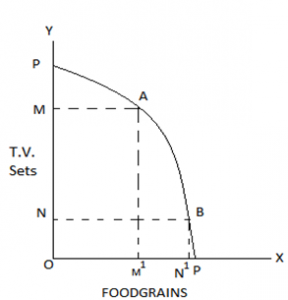Allocation of Resources
The first and foremost problem of an economy is to decide what to produce. This problem arises because productive resources are scarce. We cannot produce all the goods and services that we want. We cannot produce all the goods and services that we want. We have to choose which goods are to be the goods and services that we want. We have to choose which goods are to be produced and in what quantities. Then, productive resources are allocated accordingly. Allocation of resources means distributions of resources among different sectors of the economy. This is done according to our choice of wants. If we want to produce more of a particular good, then the economy will have to withdraw resources from other sectors to be allocated in this sector. For example, during wartime if the society decides to produce more of guns and bombs, then resources will have to be withdrawn from the civilian use to be invested in production or arms and ammunitions. Because of scarcity use to be invested in production of arms and ammunitions. Because of scarcity of resources, we cannot have more guns and more butter and bread; some bread and butter has to sacrificed for the sake of more guns.
Moreover an economy has to decide whether to produce more of consumer goods or more of producer goods. If more of consumer goods are to be produced, then we are giving preference to the present in lieu of future. Producer goods help us to produce more consumer goods in future. Except that more consumer goods are to be produced. That does not mean more of colour TVs and more of food grains can be produced simultaneously. The scarcity of productive resources may compel us to withdraw resources from colour TV production to be allocated to foodgrains production. Thus allocation of resources between the alternative uses essentially a question of which goods are to he produced and in what quantities.
The problem of location of resources can be represented with the help of Production Possibility (PP) Curve. Production Possibility curve represents various possible combinations of two goods that can be produced by employing a given amount of resources.

If the economy chooses point ‘A’ on PP Curve in Fig.1, then more of TV sets and less of good grains would be produced. If the chosen point lies on the lower part of PP curve like a point ‘B’ then more of food grains and less of TV sets would be produced. So a nation has to decide whether to produce more of necessary (food grains) or more of luxury (TV sets).
